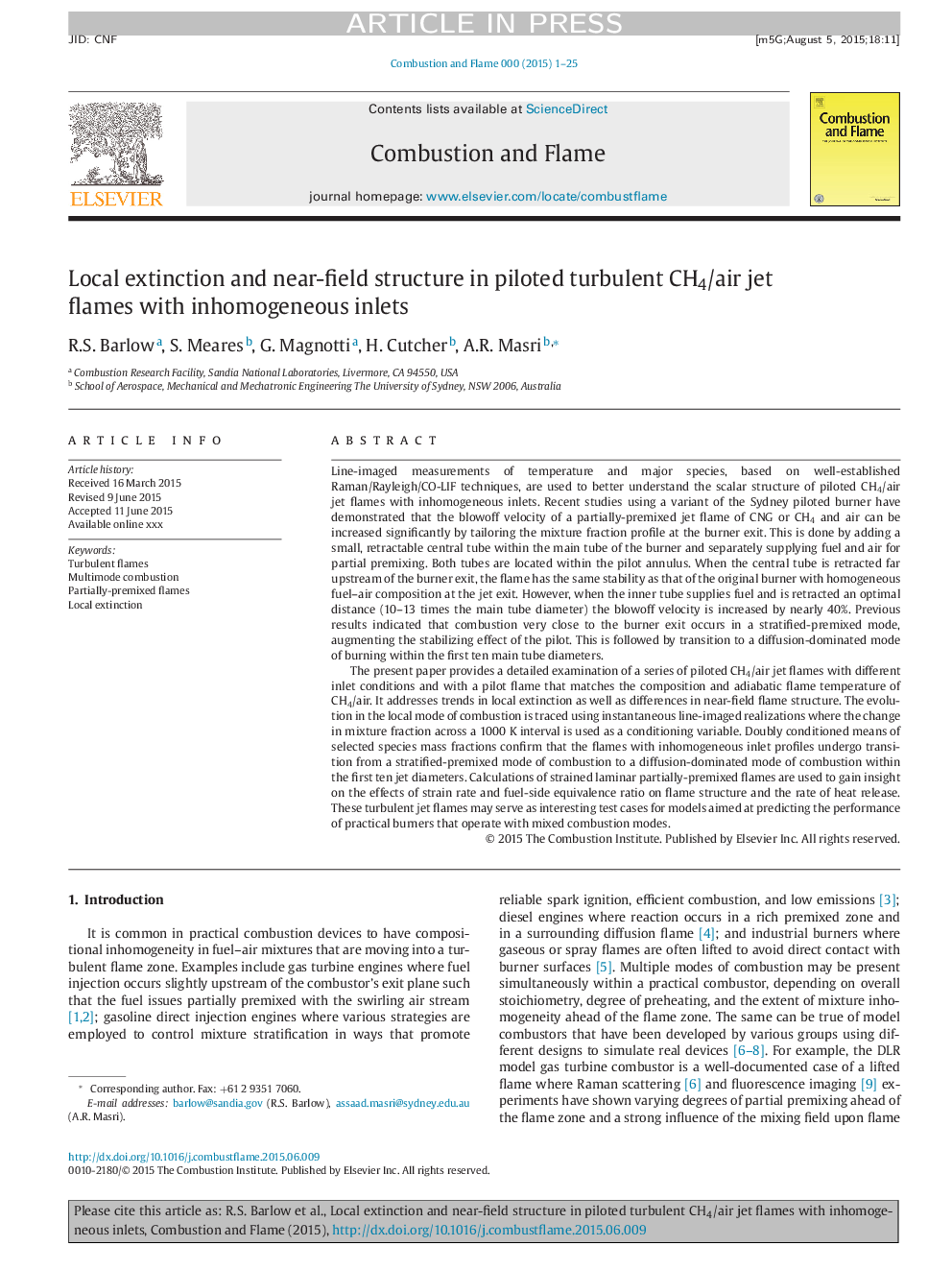| Article ID | Journal | Published Year | Pages | File Type |
|---|---|---|---|---|
| 10264750 | Combustion and Flame | 2015 | 25 Pages |
Abstract
The present paper provides a detailed examination of a series of piloted CH4/air jet flames with different inlet conditions and with a pilot flame that matches the composition and adiabatic flame temperature of CH4/air. It addresses trends in local extinction as well as differences in near-field flame structure. The evolution in the local mode of combustion is traced using instantaneous line-imaged realizations where the change in mixture fraction across a 1000Â K interval is used as a conditioning variable. Doubly conditioned means of selected species mass fractions confirm that the flames with inhomogeneous inlet profiles undergo transition from a stratified-premixed mode of combustion to a diffusion-dominated mode of combustion within the first ten jet diameters. Calculations of strained laminar partially-premixed flames are used to gain insight on the effects of strain rate and fuel-side equivalence ratio on flame structure and the rate of heat release. These turbulent jet flames may serve as interesting test cases for models aimed at predicting the performance of practical burners that operate with mixed combustion modes.
Keywords
Related Topics
Physical Sciences and Engineering
Chemical Engineering
Chemical Engineering (General)
Authors
R.S. Barlow, S. Meares, G. Magnotti, H. Cutcher, A.R. Masri,
